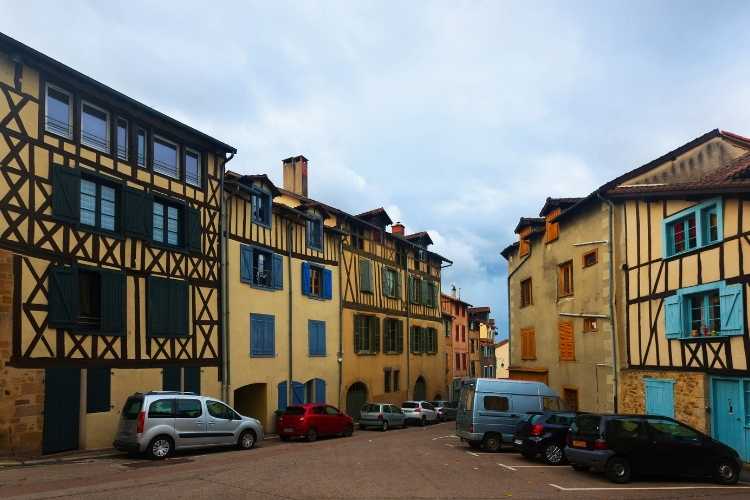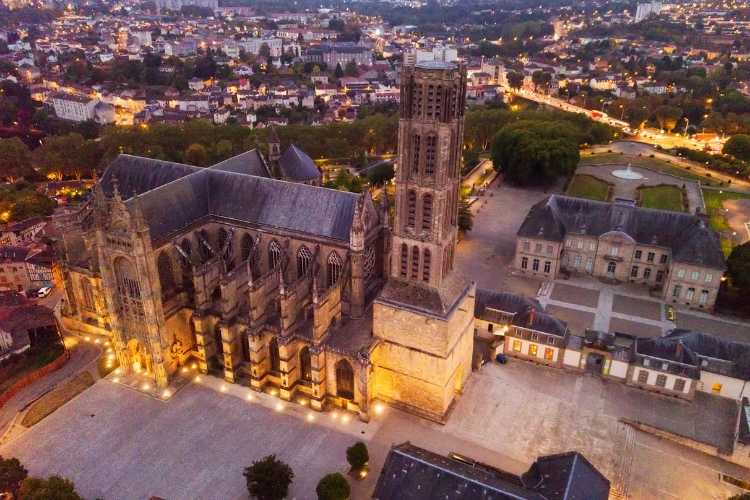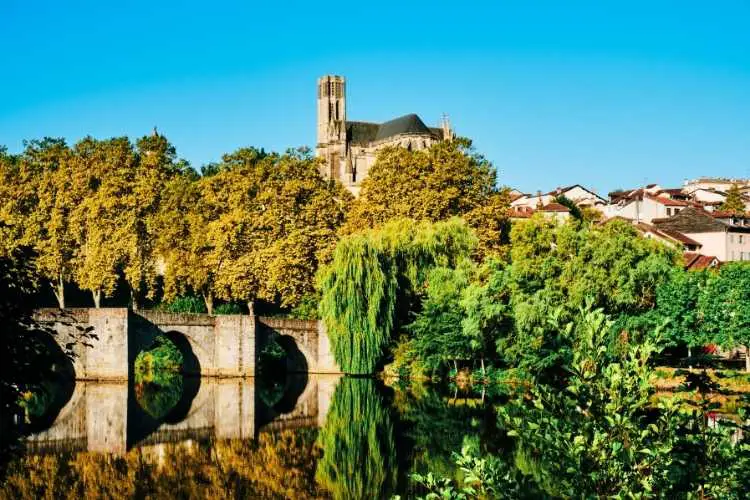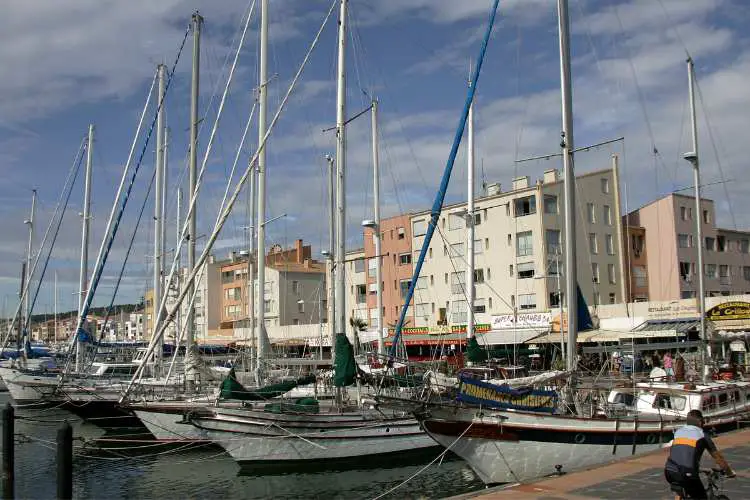Limoges is the principal city of Limousin. It’s a lively university town with a notable heritage, and is a place synonymous with affluence and prosperity. As a tourist trail, a circuit of its principal sights will not consume more than half a day.
But with attendant visits, to its parks and ancient buildings, a few relaxing coffees and perhaps a little time in its upmarket shops and boutiques, plus lunch at one of the restaurants in the butchers’ district, a day in Limoges will be well spent.
Limoges is also an ideal base if you plan to explore the region. Read Driving and touring around Limousin to plan your route.
Things to do in Limoges
Limoges has two key centres. Along the river is the ancient district around the cathedral, quiet, fairly compact, and with a relaxing botanical garden, restaurants and even an Irish pub.
Further to the north-west is the medieval butchers’ quarter – the village de la Boucherie – if anything even more compact.

This cranny of timber-framed buildings clustered around its tiny chapel dedicated to Saint Aurélien, was formerly inhabited exclusively by the city’s butchers and their families. Several of the houses still have their 19th-century shop fronts.
Tourist Guide to Correze in Limousin
One of them, the Maison de la Boucherie now serves as a small but informative museum about the area and its bloody trade.
Other things to in Limoges and places to see include:
Gare des Bénédictins
Should you arrive in Limoges by train, then you are in for an immediate treat: the city’s stunning art deco station, completed in 1929, has a fine copper dome, carved frescos and dominant copper-topped clock tower.
Musée Municipal de l’Évêché (Musée des Beaux Arts)-Musée de l’Émail
Housed in the former Bishops’ Palace this magnificent museum displays a superb collection of over 300 enamels (champlevé or cloisonné) by Limoges masters, while the adjacent Jardin de l’Évêché add an air of reflection to the visit, a place where herbs (medicinal and toxic) have been grown since medieval times.
Champlevé enamels involve pouring enamel into grooves let into a copper surface, then polishing it level with the metal. The Galérie du Canal, a co-operative gallery run by master enamelists, contains a contemporary display of such works.
Cathedral Saint Étienne

Started in the 13th century, and dominating the Vienne valley, this Gothic masterpiece took six centuries to complete. It is especially noted for its Renaissance rood loft, added in 1534, and for the fine, partly octagonal, bell tower. Also of note are the richly decorated Portail St-Jean and the beautiful Rose window.
Musée Adrien-Dubouché
Illustrating the evolution of pottery from ancient to contemporary times, this remarkable collection, which includes many examples of the finest Limoges ware, is of international importance.
Village de la Boucherie
To the north-west of the cathedral lies the medieval butchers’ quarter – the village de la Boucherie – as we’ve already mentioned this is a compact but hugely fascinating area.
It is rich with buildings that characterised the widespread 19th-century destruction and rebuilding of the town centre, necessary, it is said, because of its reputation for crime and prostitution.

Musée de la Résistance
Greater Limousin was a key focal point of the Resistance Movement during the Second World War, and this museum details the region’s struggles against German occupation, which ultimately led to the city’s self-liberation in August 1944.
Aquarium de Limoges
Certain to appeal to young children, this small aquarium in subterranean old water reservoirs, houses over 2,500 fish.
Chateau de la Borie
A short distance from the city, the chateau at Solignac, is classified as an historical monument although very little is known about its origins.
It dates from the 17th century, and is typical of the agricultural-residential Limousin estates of the time. It is believed to have been owned, during the time of Louis XIV, by Martial Maleden, a member of a wealthy Limousin family and Chief Treasurer of France.
French Castles and Chateau to Visit
Housed at the chateau is the Fondation La Borie-en-Limousin, with the aim of developing a musical meeting place for everyone working in the fields of music and sound: The Fondation regularly stages concerts in a wide range of musical genres.
What is Limoges famous for?
Limoges is famous for its porcelin and pottery production. The chance discovery of kaolin, a rare form of white clay, at Saint Yrieix la Perche in 1765 transformed the industry and life in Limoges. Hard paste porcelain requires at least fifty per cent kaolin as a component and with its discovery made Limoges famous. So began an era of prosperity, virtually unhindered even by the Revolution.
By the early 19th century, with the Vienne river serving as a means of importing wood for the kilns, the future of Limoges, originally founded by the Romans, was secured.
Since then, more than fifty per cent of the porcelain made in France comes from Limoges and the surrounding area, rather than from one specific location.
The widespread growth of porcelain and pottery production is a sign of a revival in traditional crafts that include basket-making, silk-weaving and the manufacture of musical instruments.
Among Limoges famous sons is no less than the renowned artist August Renoir (1841-1919), the child of a working class family, born in Limoges, and who worked as a boy in one of the porcelain factories, where his talent for drawing led him to being employed to paint designs on china products.






